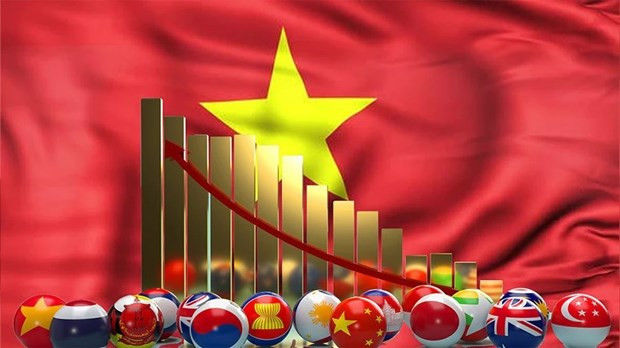
In an article on the website of S&P Global Market Intelligence, Asia Pacific Chief Economist Rajiv Biswas said Vietnam is expected to continue to be a key beneficiary of the shift in global manufacturing supply chains towards competitive Southeast Asian manufacturing hubs.
He held that Vietnam will continue to benefit from its relatively lower manufacturing wage costs relative to coastal Chinese provinces. It has a relatively large, well-educated labour force compared to many other regional competitors in Southeast Asia, making it an attractive hub for manufacturing production by multinationals. Besides, many multinationals have been diversifying their manufacturing supply chains during the past decade to reduce vulnerability to supply disruptions and geopolitical events.
The country is also set to benefit from its growing network of free trade agreements such as the ASEAN Free Trade Agreement (AFTA), the Comprehensive and Progressive Agreement for Trans-Pacific Partnership (CPTPP), the EU-Vietnam Free Trade Agreement (EVFTA), and the Regional Comprehensive Economic Partnership (RCEP), Biswas added.
The Economic Times said Vietnam is among the economies likely to benefit from the global supply chain changes, and that it has done relatively well in attracting big names in the past few years such as Samsung, Apple, Google, Nike, and Adidas.
On Eurasia Review, analyst and journalist Matija Šerić cited PricewaterhouseCoopers as saying that Vietnam is already a regional (middle) power, and in the future it could become an even stronger power in Asia and the Indo-Pacific region, maybe even wider. By 2050, Vietnam’s economy could be the 10th largest in the world.
Experts include Vietnam among the group of Next-11 countries, including Egypt, Mexico, Nigeria and others, which together with the BRICS (Brazil, Russia, India, China and South Africa) will be among the largest world economies of the 21st century.
The writing noted that there are three main factors that contributed to the rapid rise of GDP growth, production, and investments. The first factor refers to the almost maximum liberalisation of trade with Asia and the rest of the world. Another factor is domestic reforms through the deregulation of the economy and the lowering of labor prices. The third important factor is large investments through public investments in human and material capital.
The International Monetary Fund (IMF) projected Vietnam’s economic growth will recover in the second half of 2023, reaching around 4.7% for the year, supported by a rebound in exports and expansionary domestic policies. Inflation is expected to remain contained below the State Bank of Vietnam’s 4.5% ceiling.
Participants in the 14th Annual Meeting of the New Champions of the World Economic Forum (WEF) in Tianjin, China, in late June held that Vietnam is one of the bright spots of economic recovery in the region and a success example in the pandemic combat, and also plays a pioneering role in changing its growth model and committing to energy transition.
Titled “Vietnam: A rising star in emerging markets”, an article on US-based websiteportfolio-adviser.com said there is frequent hope that Vietnam will be upgraded from its current, off-benchmark, frontier market status to emerging market status by MSCI. Its stock market overall now meets the size and liquidity requirements to be included, with a four-fold surge in retail participation during the past 2 - 3 years, driven by digital account technology.
However, the limiting factor is the strict foreign ownership limits (FOLs) that constrict the market depth, it pointed out./. VNA